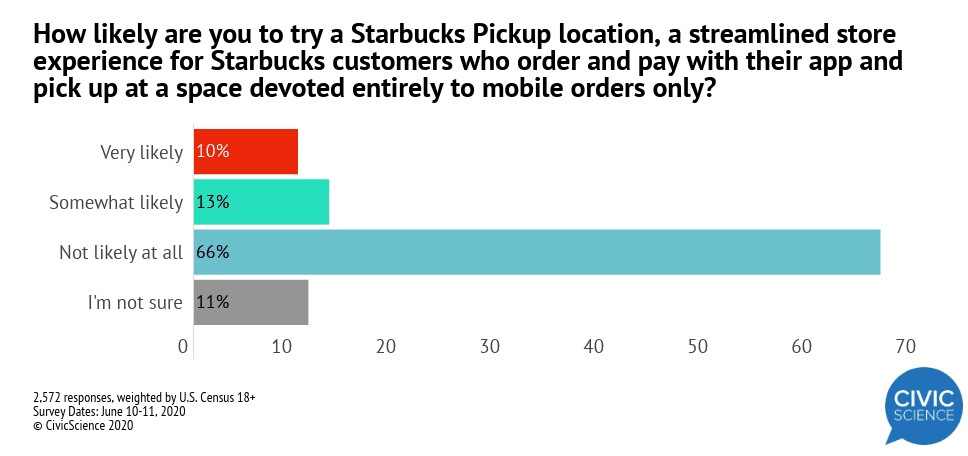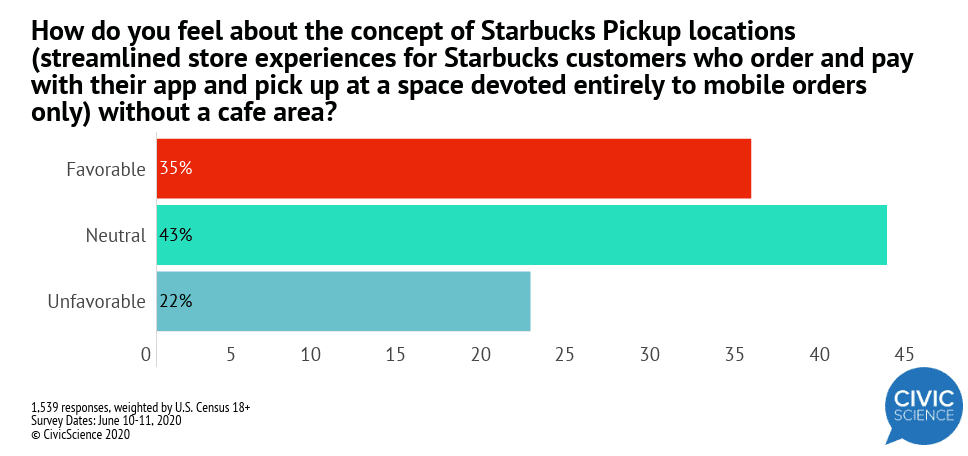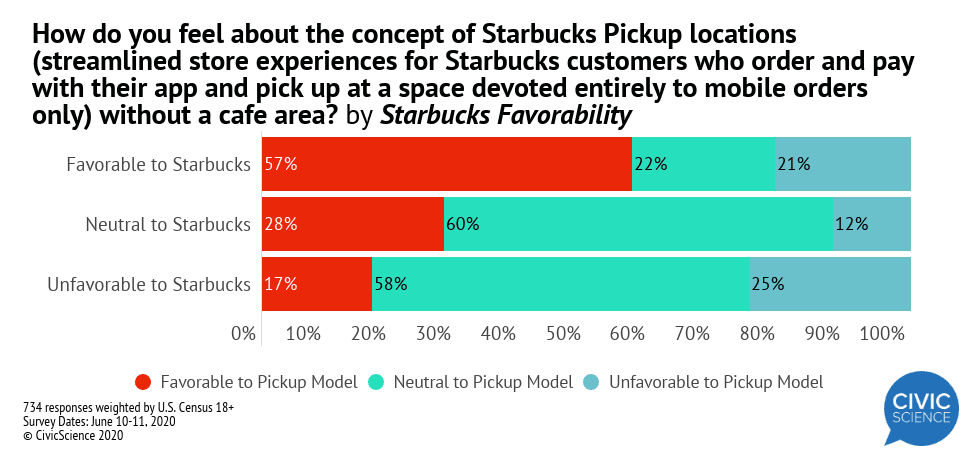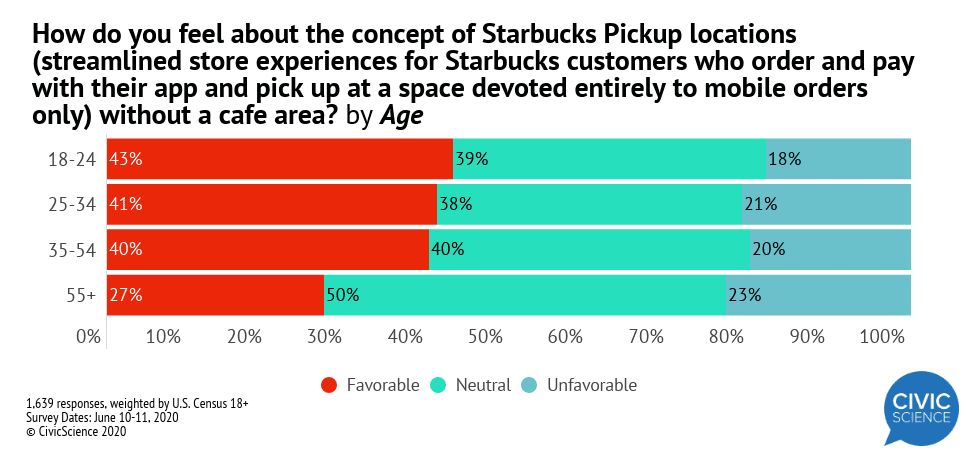Starbucks just announced it will be closing 400 of its company-owned stores over the next year and a half. But don’t completely panic about your on-the-go caffeine fix or intake of seasonal beverages. Instead, the chain is stepping on the to-go gas pedal, expediting its rollout for the Pickup concept model – stores powered by mobile ordering (ahead) only with no cafe seating in sight. The company will also expand its curbside pickup and walk-up counter offerings. That’s a lot of change for the coffee behemoth, but the coronavirus has certainly shown the need for the pivot as quite possibly the future for the to-go coffee industry at large.
According to a CivicScience study of more than 2,300 U.S. adults, 23% of the population is at least somewhat likely to try a Starbucks Pickup store when it’s in their area. While 66% aren’t likely at all, 11% are on the fence, possibly with a potential to try.
When surveying U.S. adults on the general concept of Starbucks’ mobile ordering Pickup model, favorability is even higher than likelihood to try. Just over one-third of the adult population familiar with the model (excluding those who are not sure and unaware) is favorable to the concept, and a small 22% don’t like it. However, we observe a significant portion of the population is neutral to the concept, showing plenty of room to grow in terms of adoption.
Starbucks Favorability
Though general buy-in of this concept ain’t too shabby, Starbucks drinkers are way more into the idea. More than half of Starbucks favorables are, well, favorable to the concept.
What’s more, Starbucks favorables’ likelihood to try the new to-go process over-indexes compared to U.S. adults at large. Starbucks drinkers are three times as likely as the adult gen pop to report they are very likely to try the Pickup stores (33% compared to 10% of gen pop).
Lastly, this overall concept is not just for the young. The study observes comparable favorability rates from 18 years of age all the way up to 54. And when it comes to the 55+ crowd, it’s not that they over-index by a lot in being not keen on the concept, they are just more likely to feel a lukewarm neutral.
Overall, this concept has strong buy-in from the Starbucks customer base, with lots of potential from the general population.













